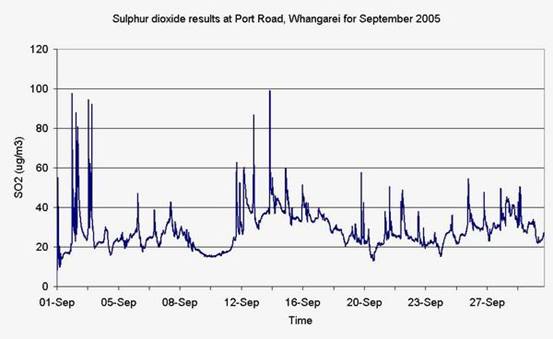Sulphur Dioxide
Sulphur dioxide (SO2) is a colourless, soluble gas with a characteristic pungent smell. It is mainly produced by the combustion of fossil fuels containing sulphur and some industrial processes.
Sulphur dioxide is a potent respiratory irritant when inhaled at high concentrations. Asthmatics are particularly susceptible. SO2 acts directly on the upper airways (nose, throat, trachea and major bronchi) producing rapid responses within minutes. It achieves maximum effect in 10 to 15 minutes, particularly in individuals with significant airway reactivity, such as asthmatics and those suffering similar bronchospastic conditions.
The symptoms of SO2 inhalation include wheezing, chest tightness, shortness of breath or coughing, which are related to reductions in ventilatory capacity (for example, reduction in forced expiratory volume in one second, or FEV1), and increased specific airway resistance. If exposure occurs during exercise, the observed response may be accentuated because of an increased breathing rate associated with exercise.
In Northland, the most significant industrial source of sulphur dioxide is the New Zealand Refining Company Limited, located at Marsden Point. The prevailing wind in this area frequently disperses emissions from the refinery towards the Whangarei Heads, a predominantly rural, residential area. To ensure that emissions from the refinery do not pose any health risk to the local community, permanent sulphur dioxide monitors were located at Urqhuart's Bay, Mcleod's Bay and Manaia School.
In previous years SO2 monitoring has not identified any occasions during which the ambient concentration of sulphur dioxide has equalled or exceeded either the current Ambient Air Quality Guidelines or the new National Environmental Standards for Air Quality. Monitoring was carried at Port Road in Whangarei in 2005-06. The results show that peak concentrations are well below the National Environmental Standard of 350 mg/m3 and also below the current 24 hour ambient air quality standard of 120 mg/m3 (shown in the graph below).

